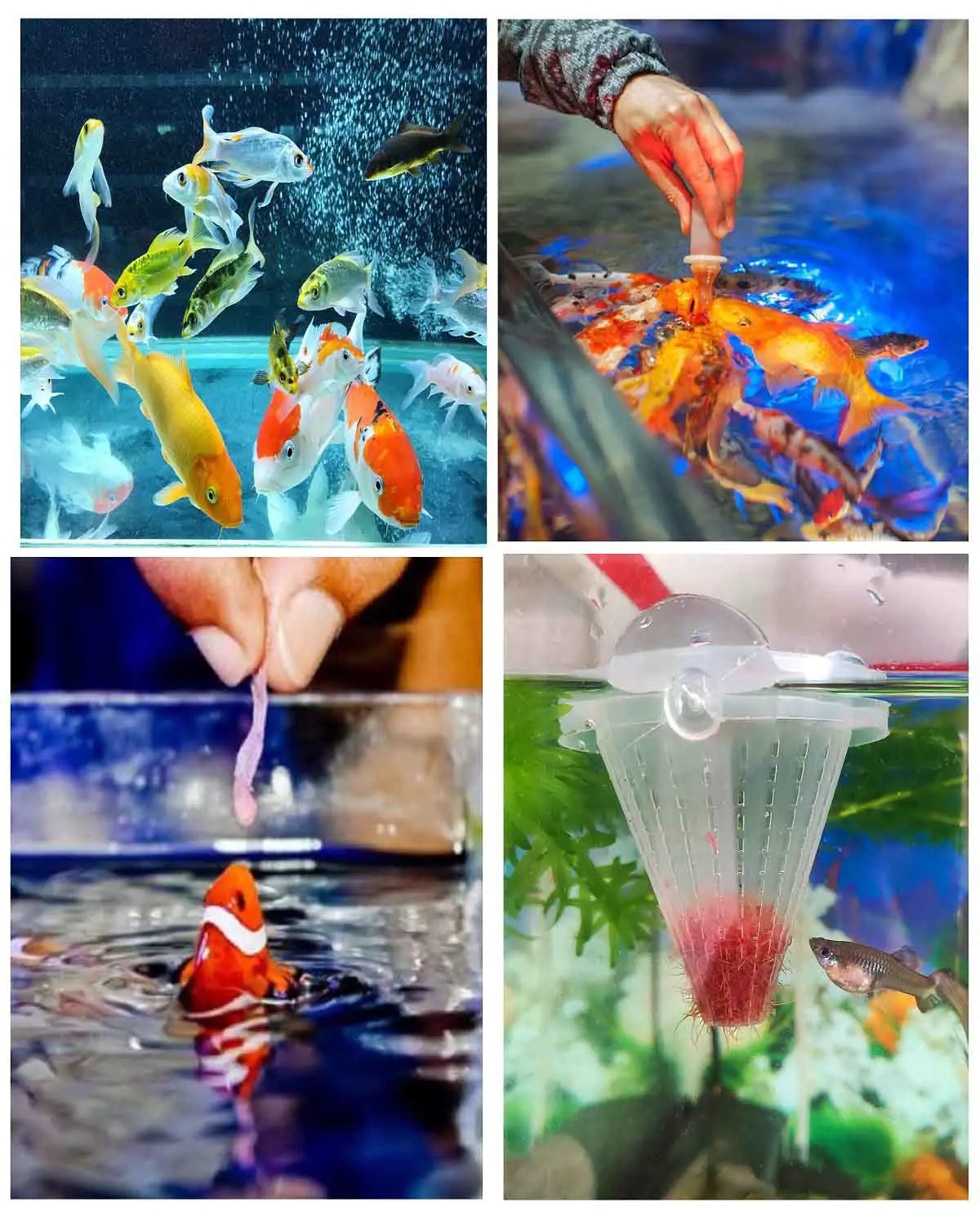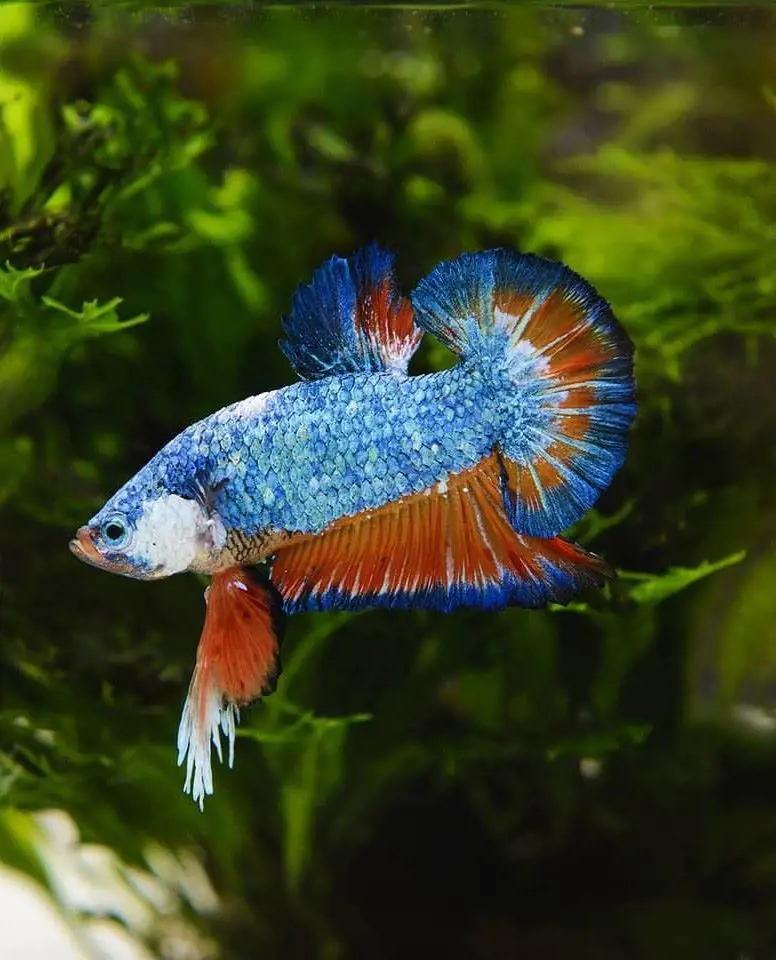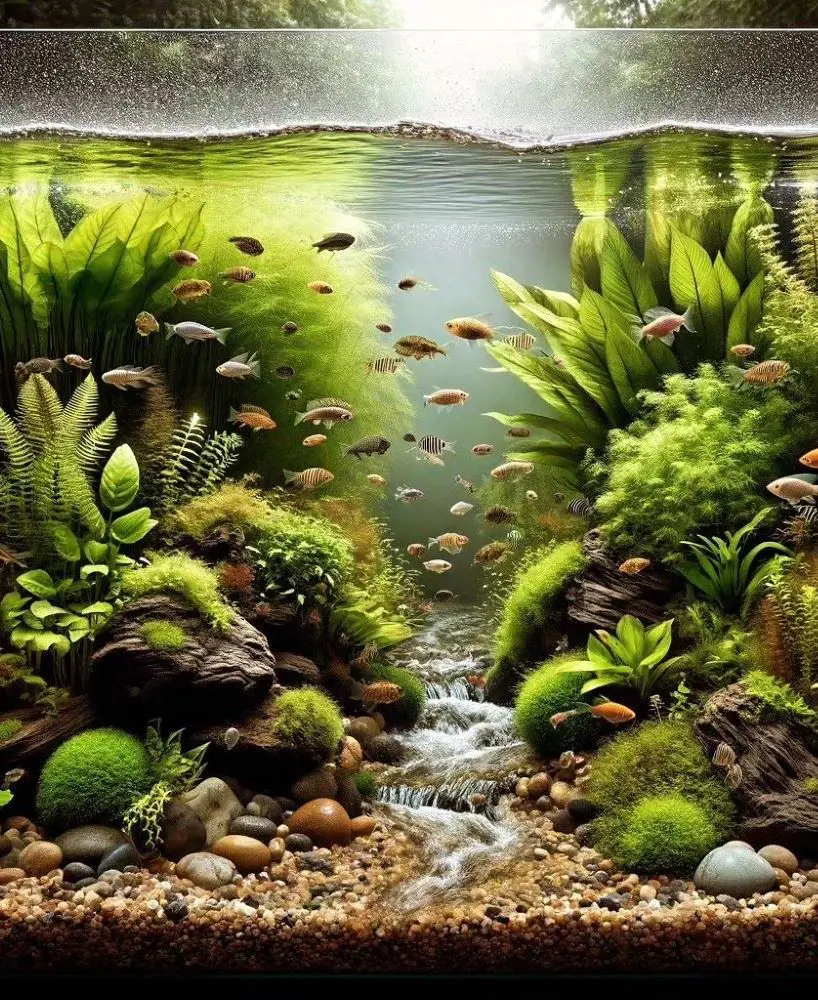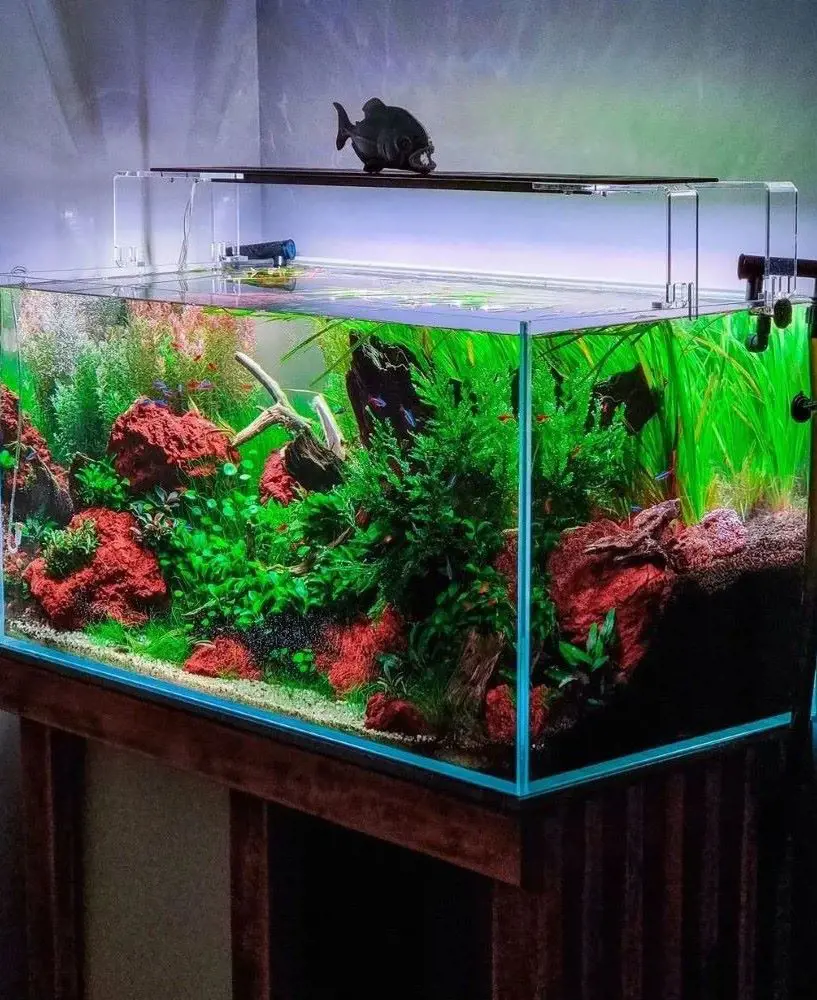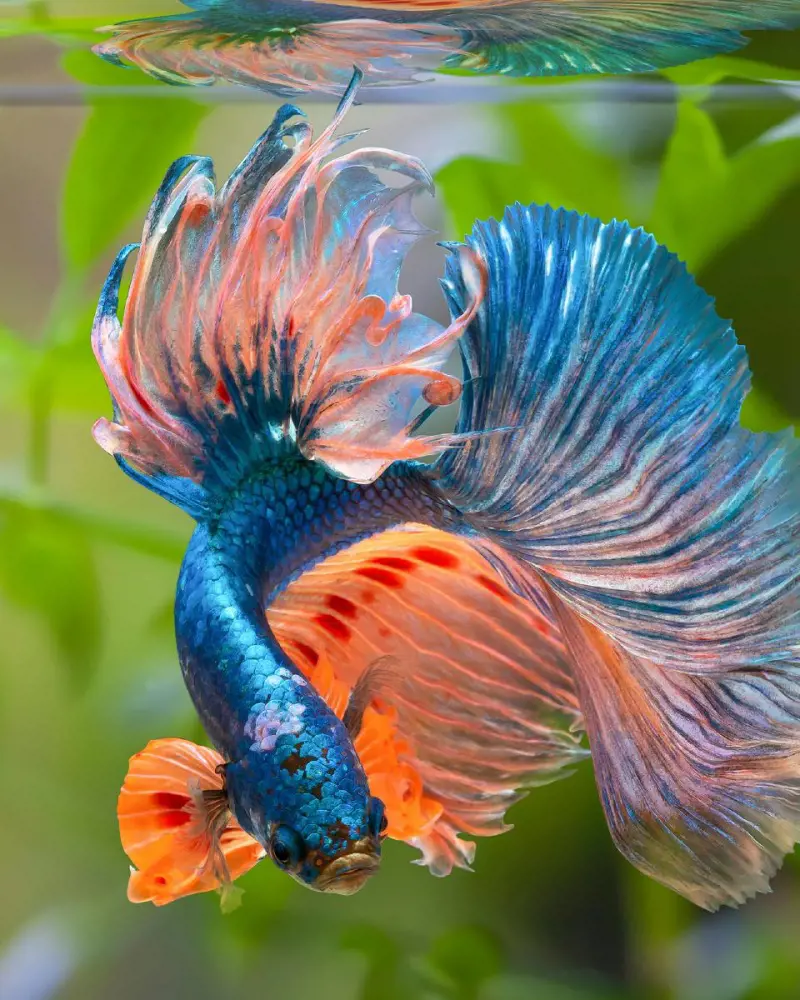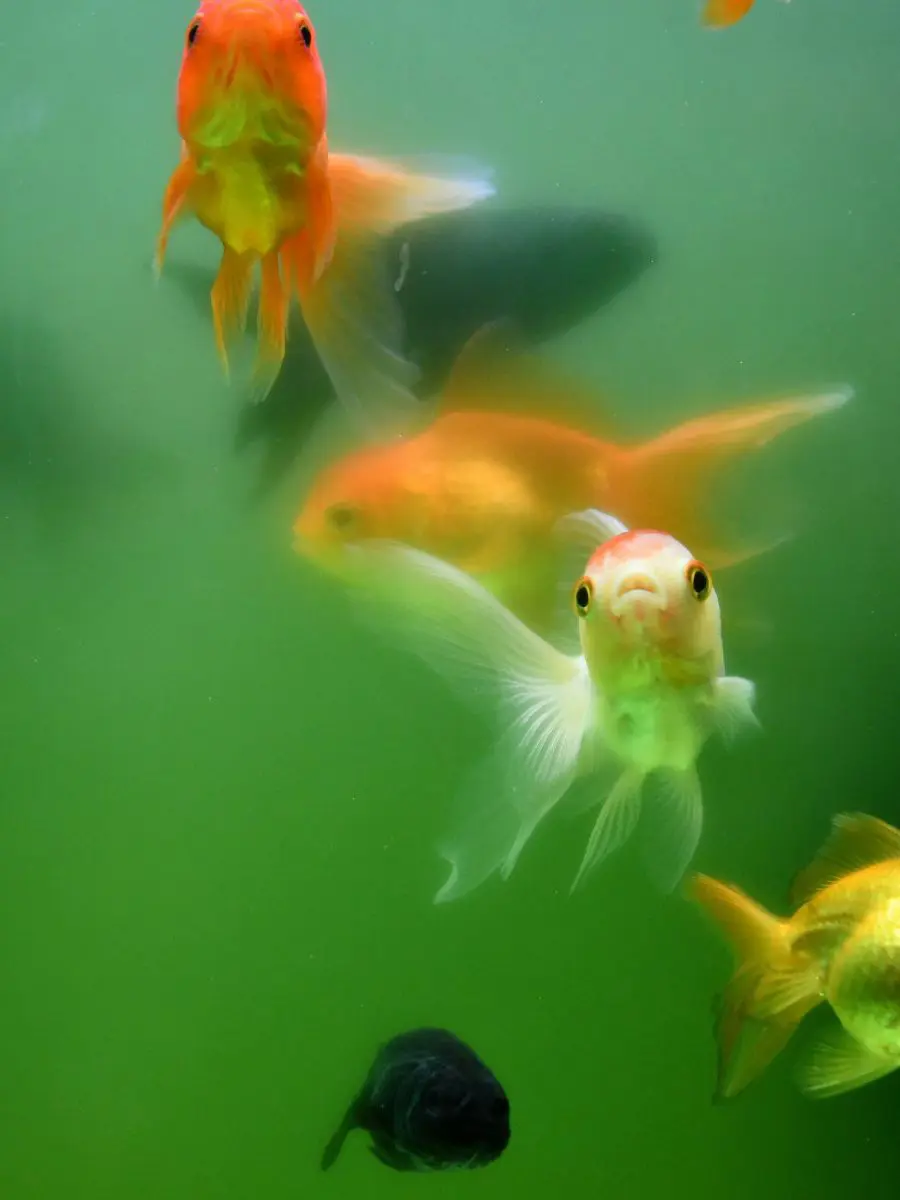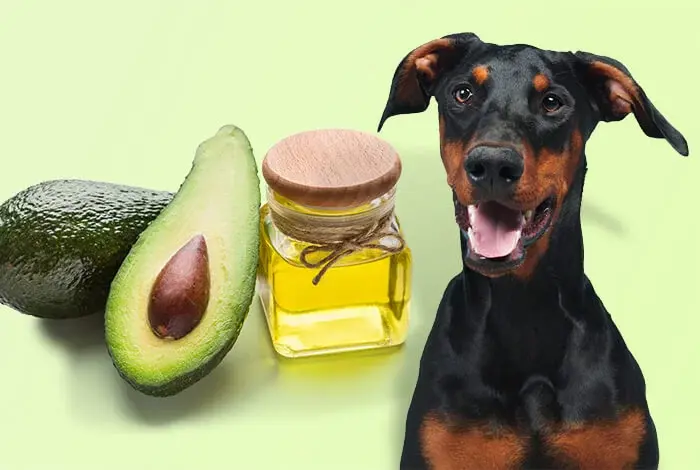Top 18 Freshwater Pufferfish For Aquarium
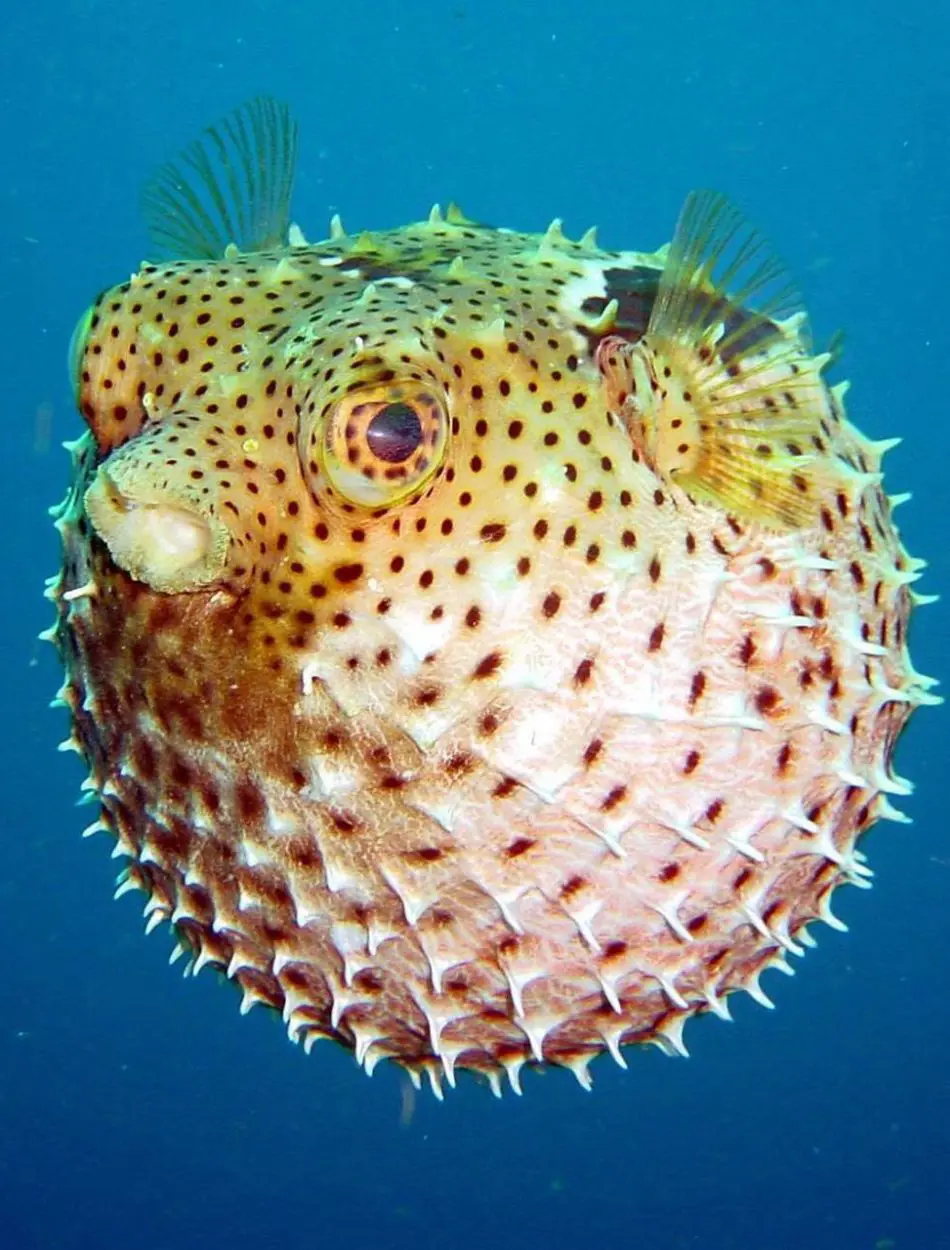
Pufferfish are one of the most famous fish known for their distinguished ability to inflate almost three times their body size. They are also known as "blowfish" as they can look like a blown-up balloon.
They are highly intelligent, have helicopter-like flexibility, and have large, curious eyes. There are around 190 species of pufferfish. They can be a unique and fun addition to your fish tank. In this article, we will discuss 18 pufferfish that you can add to your aquarium.
1. Dwarf Puffer Fish
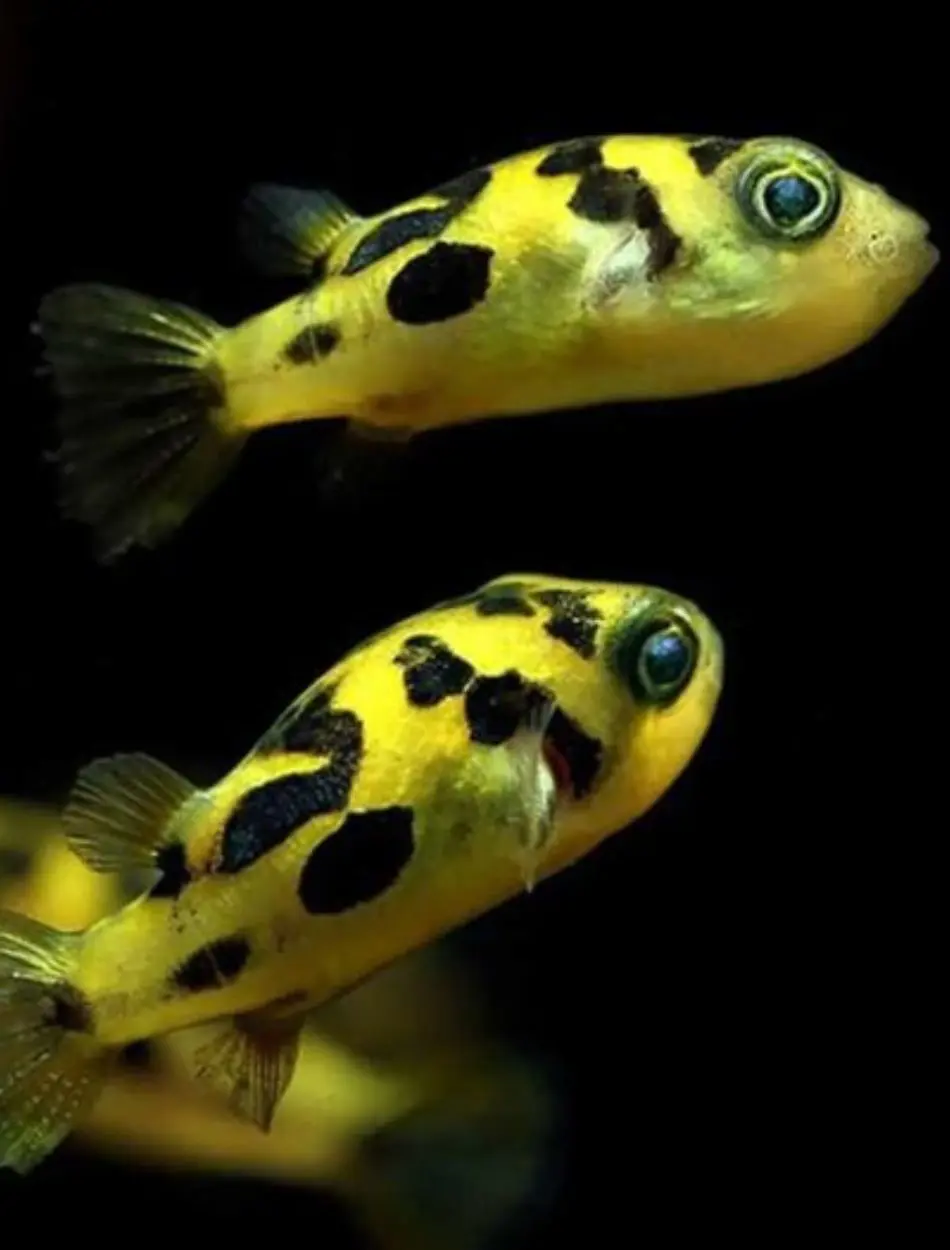
Dwarf Pufferfish is the smallest species of pufferfish that have round bodies, bright yellow-green coloration with dark spots, and expressive eyes. They reach up to 1 inch in length and are also known as the Pea Puffer and Pygmy Puffer.
If provided with proper care, Dwarf Puffers can live six years or more. They tend to live in groups in the wild. Therefore, it is best to keep them in a group of at least six in a single-species tank. Make sure to secure the lid on the task as they tend to jump out of the water.
They do not require crunchy foods or tooth trimming. They can be fed a mix of live and frozen foods. You can provide them with bloodworms, brine shrimp, small pest nails, and white worms.
2. Amazon Puffer Fish
Amazon Puffer Fish, also known as South American Puffer(SAP) is a freshwater species that comes from the Amazon River basin. They can grow up to 4 inches long and have a golden-yellow body with black, irregular marks on the back. They are well known for their torpedo-shaped bodies.
These fish are calm compared to other freshwater pufferfish and coincide well with other fishes. When adding it to a tank, you can add it by itself or add it with a group of six or more. They also thrive well with active tank mates such as mollies, swordtails, larger tetras, and dwarf cichlids.
These species are known for getting overgrown teeth. If such a condition arrives, they may not be able to eat properly and may starve to death. Thus, you must grind them by feeding crunchy foods such as bladder snails, ramshorn snails, and freeze-drilled krill.
3. Spotted Congo Puffer
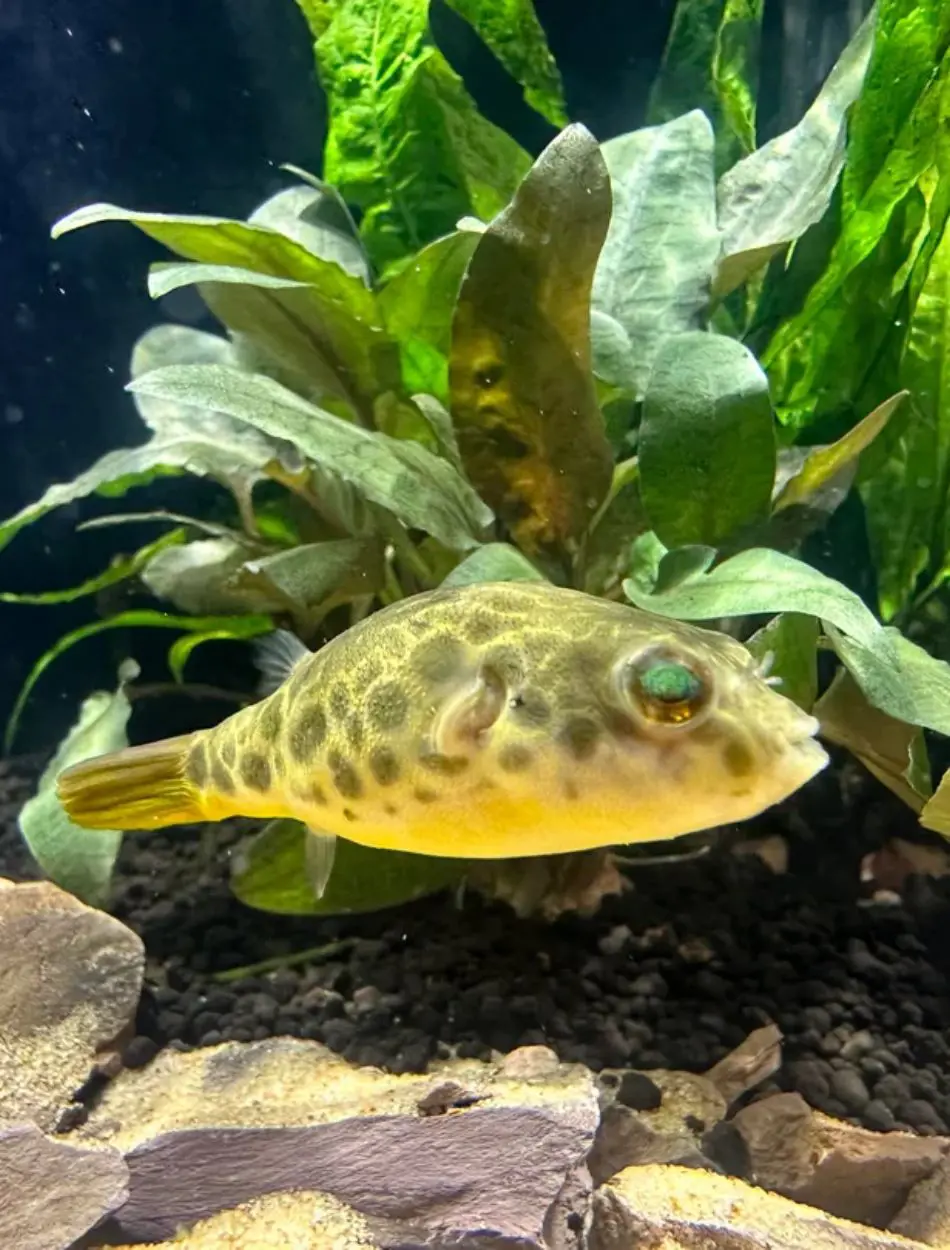
The spotted Congo Puffer is an intriguing fish that has a tan-colored back, yellowish belly, and black spotting fish. They can grow up to 3-4 inches and are hence one of the smallest African puffers. They come from the freshwater Congo basin and favor 74-80 degrees Fahrenheit.
These fish can live up to 10 years as pets. It is suggested to keep them individually or in a single-species tank as they are known for their unprovoked aggression. One of the features of this fish is that they can change color when stressed creating black bars across their back.
They can be kept with tank mates such as Congo tetras, peaceful pelcos, corydoras, and rainbowfish. You can feed them snails, worms, insects, and frozen foods.
4. Arrowhead Puffer Fish
Arrowhead Pufferfish are the species that spend most of their time very still waiting for prey to swim by. They are also known as Pig-Face Puffers. It is named for its unique arrowhead-shaped body. Growing up to 6 inches, these freshwater puffers are brown, patterned back with some spotting and a light-colored belly.
Arrowhead Puffers are most active during mealtimes. They have a sedentary nature and thus people don't feed them every day. They are aggressive and tend to eat other fish and fight with their species. Thus, it is better to keep them on their own. They eat all kinds of live or frozen worms, diced fish filets, snails, clams on the half shell, and shrimp.
5. Hairy Puffer
Hairy Puffers are similar to Arrowhead Puffers due to their mottled brown color. However, they have beards around the lower jawline and on its body. With the help of these skin tabs, it looks like a round rock with algae tufts growing on it.
These freshwater puffers can grow up to 5 inches and thrive while being kept alone. Make sure your aquarium has a deep sand bed as it tends to cover itself in a fine substrate. However, you can add plants such as anubias, java ferns, and floating plants that do not require substrate.
They feed on worms, snails, crustaceans, insects from reptile stores, and diced fish filets. Moreover, they are also fond of frozen foods and Repashy gel food.
6. Dragon Puffer Fish
Dragon Puffer Fish, also known as Humpback Pupper, is a large 8-inch fish known as an ambush predator. They have brown backs with mottled patterns and round spots. This helps them to blend in the substrate. They come from Southeast Asia and can survive around 75-82 degrees Fahrenheit, 6.8-7.6 pH, and moderate GH.
Dragon puffers are ambush predators that should be kept alone or in a single-species tank. These puffers are most active at dawn and dusk. They have strong teeth, so it is advised to feed them crunchy foods such as freeze-dried krill, bloodworms, and clams on the half-shell. They also eat live foods such as snails and small fish.
7. Figure Eight Puffer
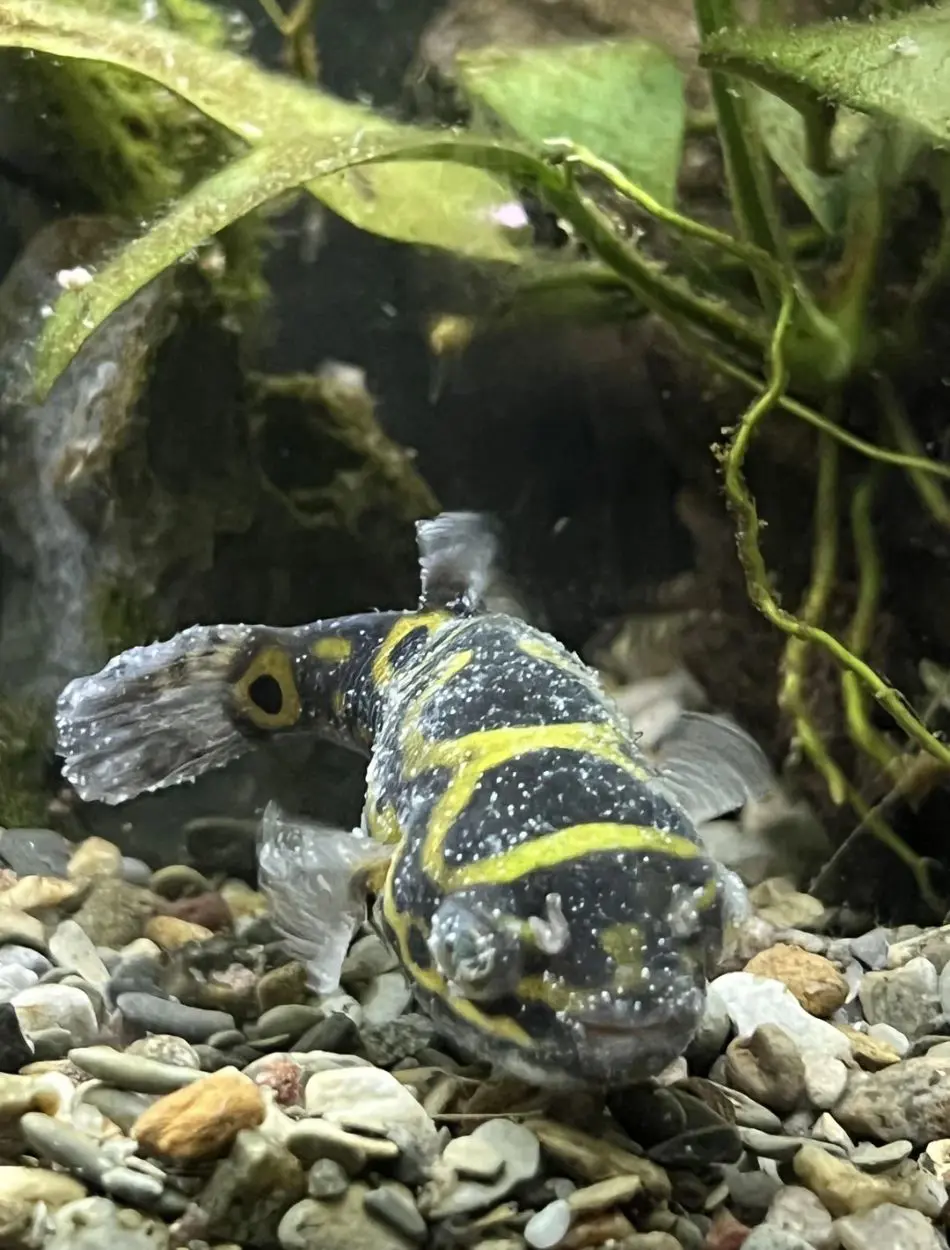
Figure Eight Puffer Fish, also known as Eyespot Puffer Fish, gets its name from the yellow-green squiggles on its back that look like number 8. If kept in proper and healthy condition, these fish can grow up to 3 inches long and can live up to 15 years.
These fish are active and it is recommended to keep them in long tanks that have both open spaces for swimming and decorations as well. They are relatively chilly in nature. However, avoid keeping them with slow-moving fish or fish with flowy fins as they can nip their fins.
Figure eight fish pair successfully with bumblebee gobies and mollies. Its diet consists of pest snails, ghost shrimp, frozen foods, and freeze-dried krill.
8. Green Spotted Puffer
Green Spotted Puffer is an active fish known for its bright yellow-green back covered in black spots and light-colored belly. These fish can be 4-6 inches long and thrive on 76-82 degrees Fahrenheit water with a pH of 7.5-8.5.
To buffer the pH, you can use crushed coral or aragonite sand as the substrate. It is not good for their long-term health to keep them in freshwater. So, you must adapt them to a Specific Gravity between 1.004 and 1.020. You can add java fern and mangroves to the tank.
These freshwater puffers are curious and intelligent fish. but they can be aggressive. They should be kept in a spacious tank that has hiding spots. You can keep them with larger mollies, knight gobies, and scats. They feed on bloodworms, snails, mealworms, small crabs, and shelled foods to wear down their growing teeth.
9. Fahaka Puffer Fish
Fahaka Fishes are monster fishes that have yellow striping against a darker, mottled back. They have a robust body that can grow up to 18 inches. Thus, their tank should be filled with at least 120-180 gallons of water.
These fish tend to show aggressive and territorial behaviors towards other puffers, making them unsuitable for community tanks. However, they can be kept with pelcos, rainbowfish, and roseline sharks. Some also keep them with zebra danios, barbs, and tetras as they are too little to be noticed.
Fahakas are messy eaters and need more tank maintenance. They feed on clams, prawns, crayfish, crab legs, and other frozen seafood. While feeding them, it is advised not to use your hands as they have very strong jaws. However, you can use feeding tongs or simply drop in the food.
10. Mbu Puffer Fish
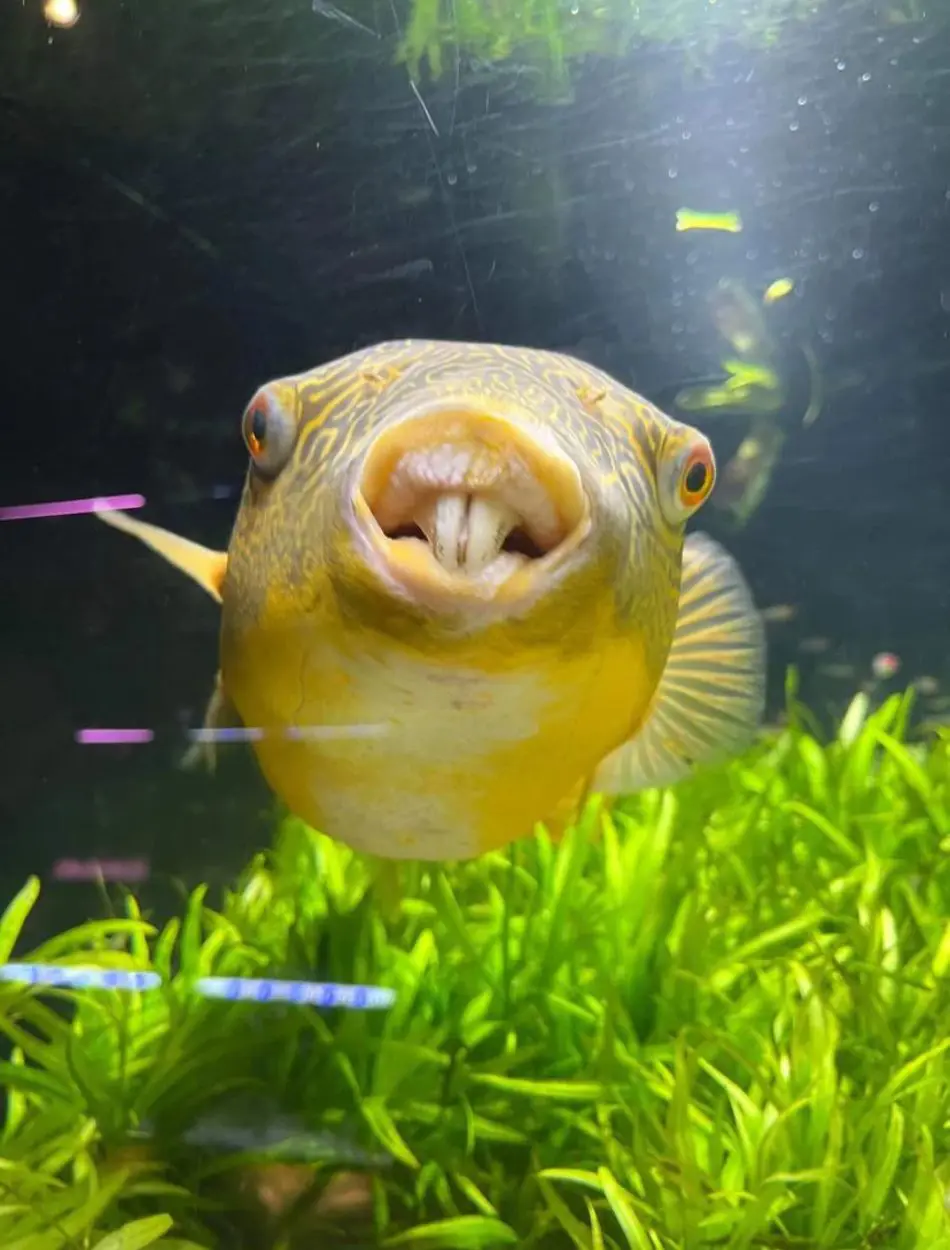
Mbu pufferfish is the largest pufferfish species that has playful smiles, detailed patterns, and bright yellow bellies and tails. They are also known as Giant Puffer Fish as they can grow up to 30 inches. If provided with proper care and healthy food, they can live for over 20 years.
Mbu Puffer Fishes are territorial towards their species but can be kept with other fish that will not outcompete them. They can pair well with rummy-nose tetras, horseface loaches, hillstream loaches, and geophagus cichlids. These pufferfish
They feed on large amounts of clams, mussels, snails, crayfish, and other crustaceans. Their diet also consists of soft food such as cocktail shrimp and frozen bloodworms soaked in vitamin supplements.
11. Yellow Puffer Fish
Yellow Pufferfish, also known as golden puffer, is an attractive freshwater pufferfish that has a curious and interactive personality. They come from the Congo River Basin in Africa and have bright yellow bodies with defining dark stripes.
Yellow Puffer Fish have predatory instincts and possess aggressive behaviors. They should be kept in a tank that is either species-specific or carefully moderated to fit in with their temperament.
It is recommended to keep them in an aquarium with a soft substrate along with hiding places. Their diet consists of live and frozen foods such as small snails, worms, insects, bloodworms, brine shrimp, and daphnia.
12. Valentini Puffer Fish
Valentini Puffer Fish is a bright and colorful fish that has dark brown bands across the midsection. They have brownish-orange spotting in the lower half, yellow fins, and blue stripping that runs along the back.
Parts of these freshwater fish are poisonous and can inflate their bodies to almost twice their normal size when threatened. They feed on meaty foods such as squid, krill, clams, and hard-shelled shrimp. These fish are more calm compared to other fishes. So it is recommended to house the Valentini Puffes in non-reef aquariums along with non-aggressive fish.
It is well suited for aquariums that have sandy or fine gravel substrate and hiding spots. To maintain proper health. their tank water should be changed regularly and should be provided with balanced diet.
13. White Spotted Puffer Fish
White Spotted Puffer Fish, also known as Stars and Stripes Puffer, is a freshwater species that has a unique white body with black spots. They grow about 6 inches long and are native to the Indo-Pacific region.
It is generally peaceful and calm, however, it can also show territorial behavior. Therefore, they should be kept in a well-planned tank. When housed in a tank, they should be fed live or frozen foods such as small crustaceans, worms, and sometimes snails. It is important to note that their aquarium should have hiding spots and soft substrate
14. Porcupine Puffer Fish
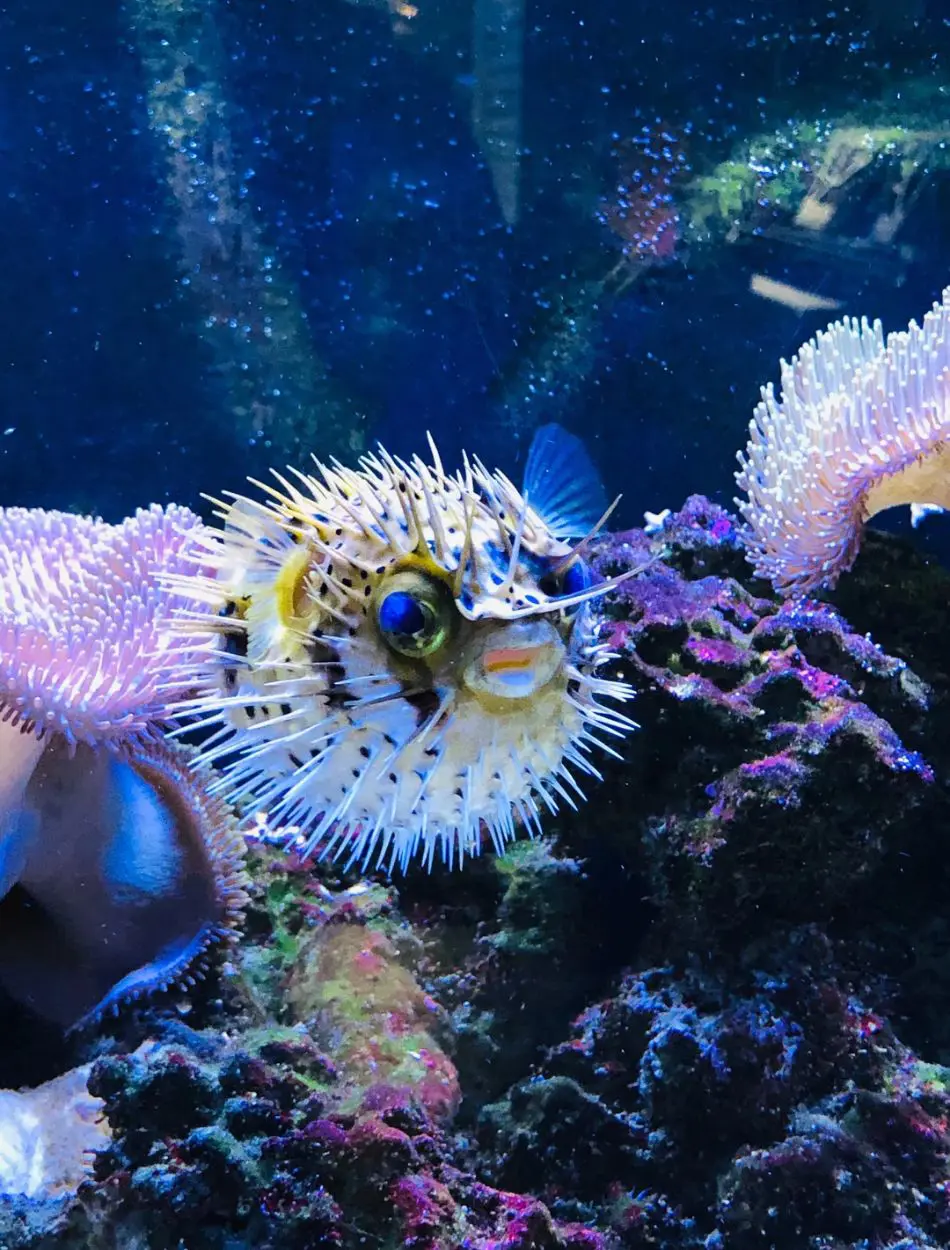
The Porcupine Puffer Fish is a spiny puffer that is distinguished by its unique look featuring spines on its body. They inflate their bodies to erect their spines to scare their predators. These freshwater pufferfish can grow up to 8 to 24 inches and are native to Indo-Pacific waters.
Porcupine pufferfish thrive in coral reefs and coastal environments. Thus, their tank should be spacious, well-maintained, and should have hiding spots. They should be kept in species-specific tanks or with carefully selected tank mates as they can be territorial and show aggressive nature.
Porcupine fish should be fed with high-quality fish foods such as ghost shrimp, feeder fish, crabs, mysis shrimp, bloodworms, krill, mussels, and squid.
15. Guineafowl Puffer Fish
If you spot a fish with a sleek, dark body consisting of an array of gorgeous white spots that resemble the speckled plumage of a guineafowl bird, there is a high chance it might be a Ginueafowl Pufferfish.
Guineafowls can be territorial sometimes. However, they are mostly peaceful underwater species. To select its tank mates, one should keep in mind its nature, size, and dietary habits. They pair well with fishes such as Emperor Angelfish, Blue Tang, Harlequin Tuskfish, Niger Tiggerfish, and Queen Angelfish. You can feed them shrimp, squid, and hard-shelled foods.
16. Black Pufferfish
Black Pufferfish is a small-sized fish that has an oval shape, spherical, and elongated body. Their background color can be of different types such as grey, light brown, bluish, bluish dark, bright yellow, and orange yellow.
These fish are generally peaceful but can be territorial sometimes. Thus, it is better to keep them with fish of similar size and temperament. One of the distinct qualities of these fishes is that they inflate their bodies by gulping water as a defense mechanism. They should be fed live or frozen foods such as shrimp, squid, krill, and hard-shelled prey like sails.
To make them happy and healthy, their tank should consist of hiding spots and a soft substrate. Pairing them with large angelfish, tangs, and groupers is also recommended.
17. Target Puffer Fish
Target Pufferfish is an interesting species with mottled brown or green bodies with two distinctive dark spots on the death side, resembling target marks. They have a round body with a large head and expressive eyes.
Target fish are aggressive and territorial towards other pufferfish and smaller fish. They explore and interact with their surroundings as they are active and curious underwater fish. They should be provided with live or frozen foods such as shrimp, clams, and meaty items.
A tank should contain hiding places and a sandy or fine gravel substrate when kept in a tank. They should be kept in a species-specific tank or with larger, non-aggressive fish.
18. Japanese Puffer Fish
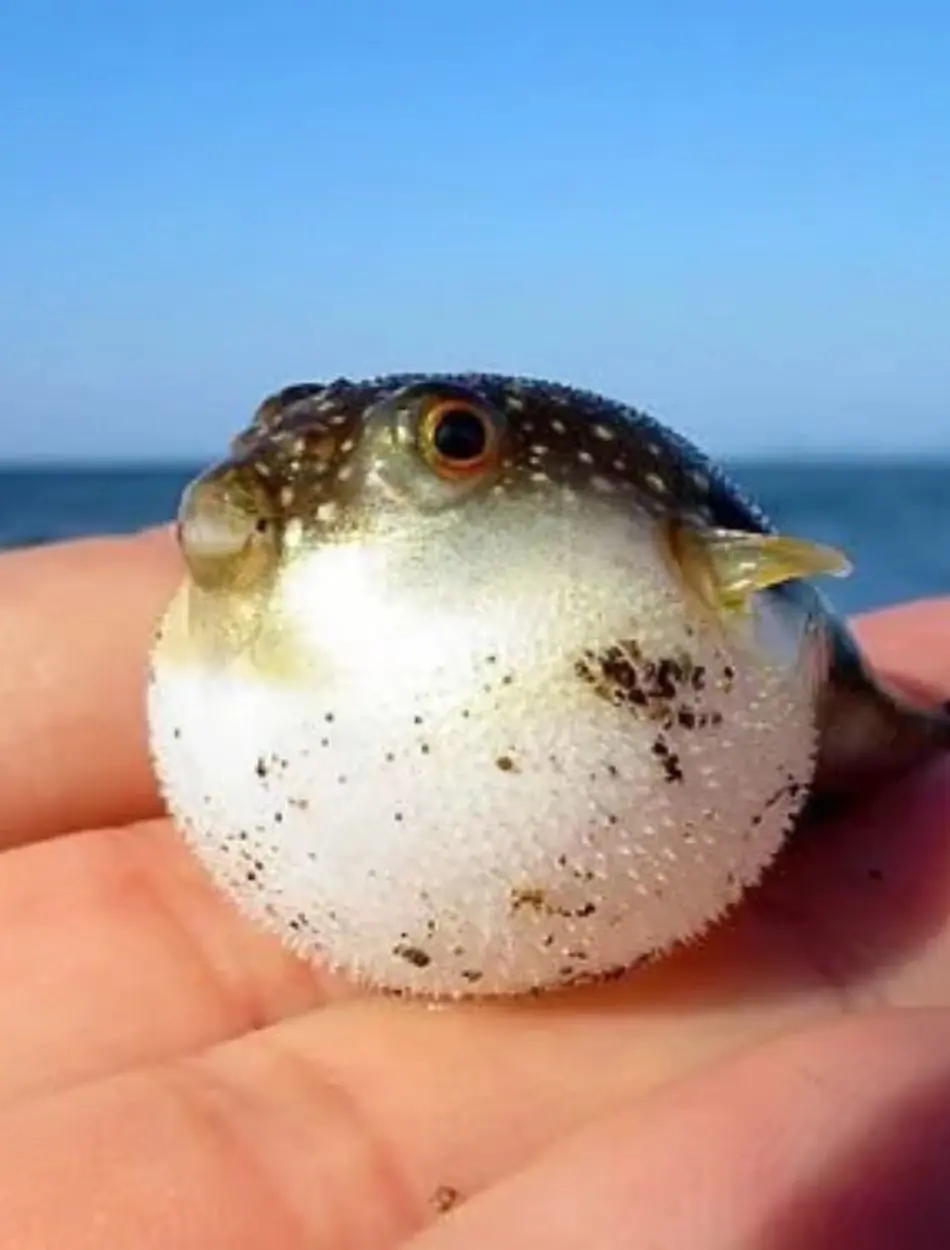
Japanese Pufferfish, also known as Fugu, is well known for its culinary importance and distinct features. They are rounded up with a mottled pattern of brown or grey on their upper body.
While they are peaceful most of the time, they can be territorial in confined spaces. Therefore, it is best to keep them in a large tank that has plenty of swimming spaces and hiding spots. They can be fed food such as shrimp clams, and other meat items.
Japanese Pufferfish can inflate their bodies to make them look larger as a defense mechanism. These fish are very curious and have an interactive nature, so, you can keep them with larger, non-aggressive fish.
Top Lists

